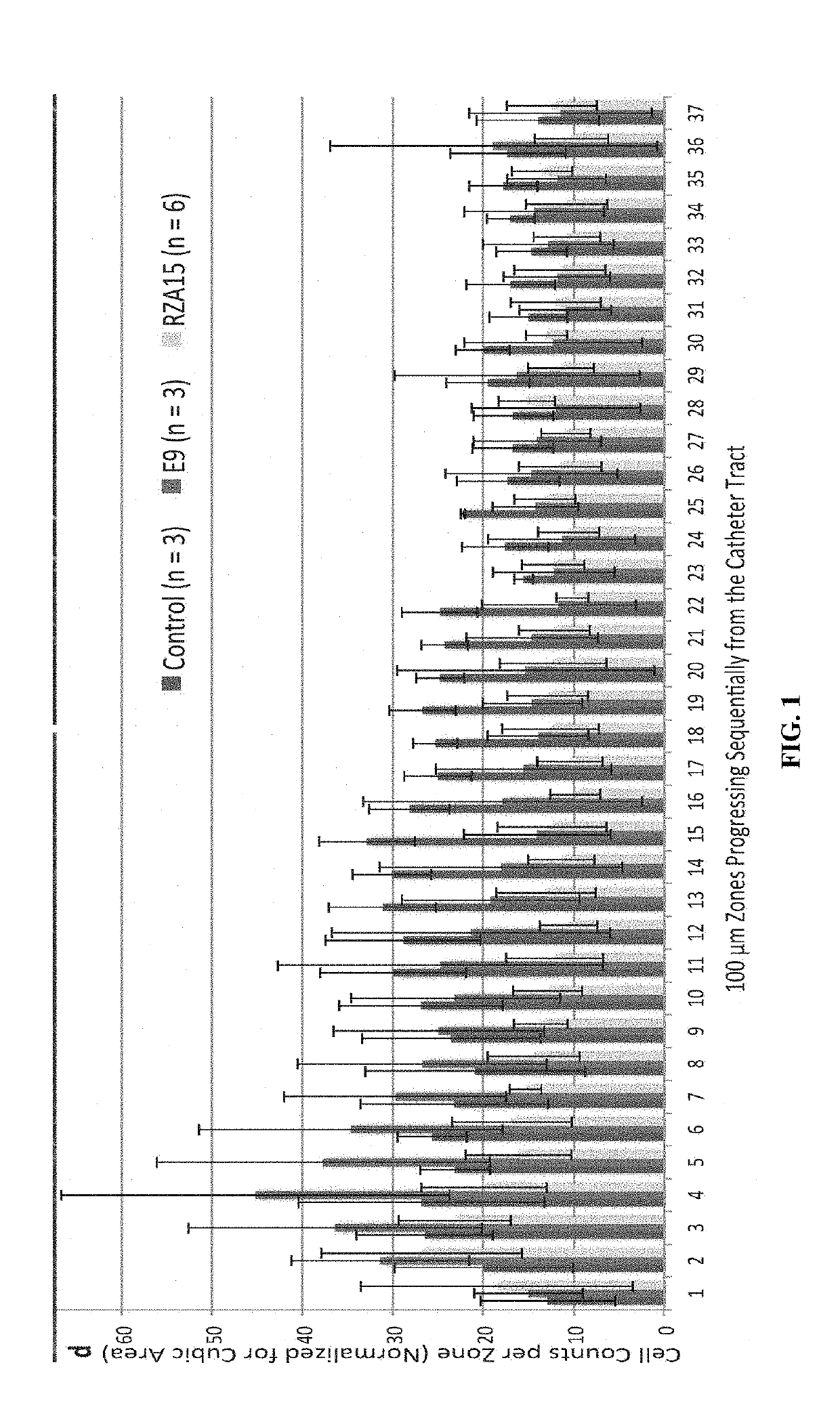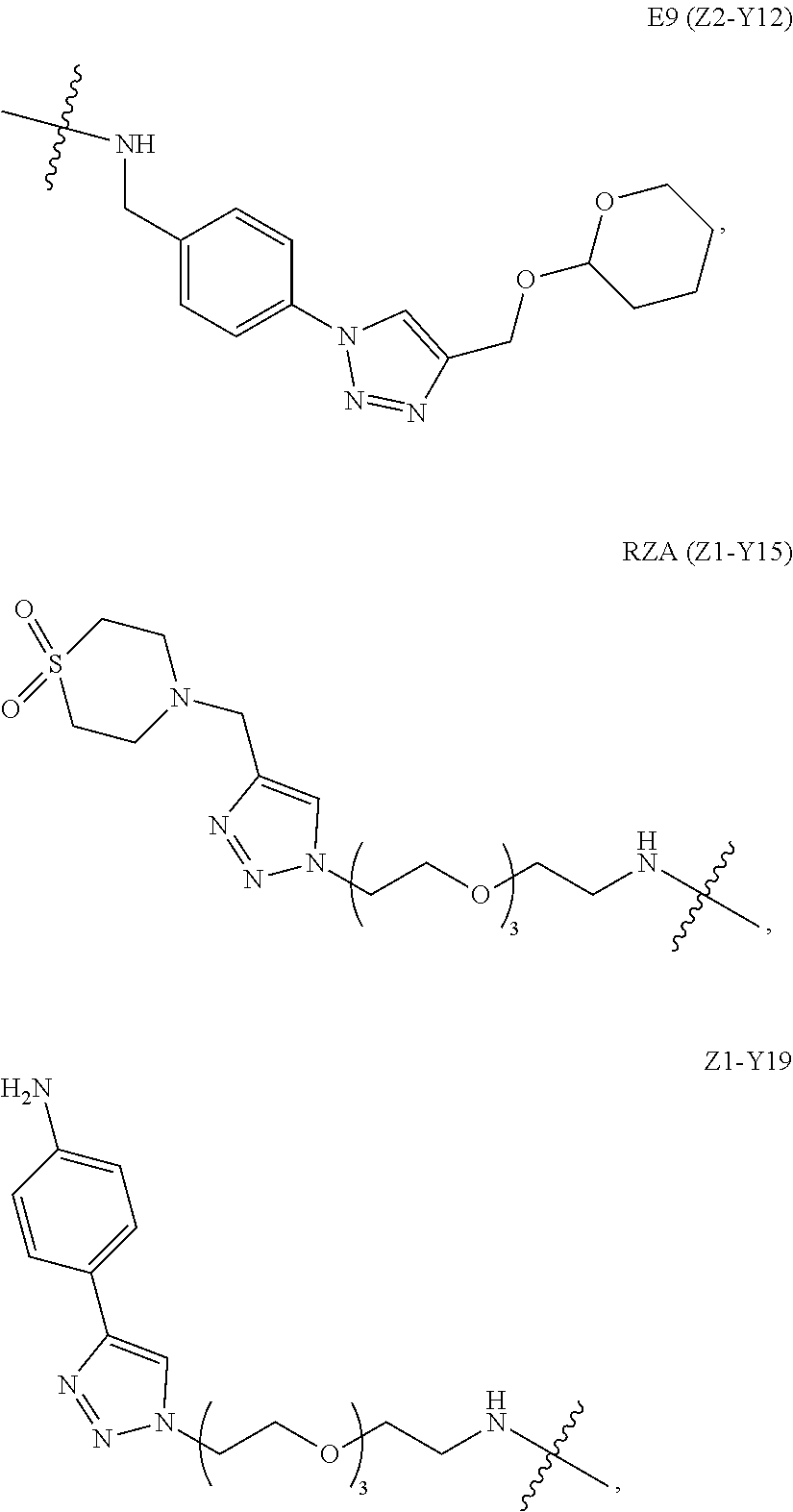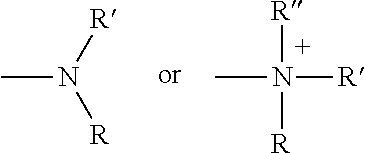Anti-inflammatory coatings to improve biocompatibility of neurological implants
- Summary
- Abstract
- Description
- Claims
- Application Information
AI Technical Summary
Benefits of technology
Problems solved by technology
Method used
Image
Examples
example 1
Modification of Neurological Implants and Characterization
Materials and Methods
[0227](i) Chemical Modification
[0228]Ventricular catheters, purchased from Medtronic, were chemically modified with anti-inflammatory small organic molecules termed E9 (Z2-Y12) and RZA15 (Z1-Y15). To perform chemical modifications, the catheters were plasma treated for 1 min on each side and immediately dropped into a 0.2-M solution of either E9 or RZA15 in 5% DMSO in toluene. The reaction was stirred for 60 min and the materials were washed three times in methanol, three times in ethanol, three times with sterile grade water, and finally again with sterile grade ethanol. The materials are dried under high vacuum overnight.
[0229](ii) Characterization of Modified Surfaces
[0230](a) X-Ray Photoelectron Spectroscopy
[0231]X-ray photoelectron spectroscopy (XPS) is a surface-sensitive quantitative spectroscopic technique, which enables the measurement of the elemental composition at the surface (within 6 nm rang...
example 2
tudies of Foreign Body Response to Chemically Modified Neurological Implants
[0240]Neurological implants are devices used to restore, replace or bypass the lost neurological functions due to diseases or injuries. When these implants are inserted into neurological tissue, they directly interface with cells of the nervous system. This interaction leads to recruitment of microglia and astrocytes cells leading to inflammation, scar tissue formation and cell death. These deleterious responses affect the performance of the device and overall health of peripheral tissue.
[0241]The Langer / Anderson laboratory at Massachusetts Institute of Technology (MIT) has developed a library of super biocompatible anti-inflammatory small molecule coatings, which have been discovered through a broad in vivo screen of more than 1000 different chemistry formulations (PCT / US2016 / 059966, filed Nov. 1, 2016, which claims priority to U.S. Provisional Application No. 62 / 249,343, filed Nov. 1, 2015).
[0242]A subgrou...
PUM
| Property | Measurement | Unit |
|---|---|---|
| Biocompatibility | aaaaa | aaaaa |
Abstract
Description
Claims
Application Information
 Login to View More
Login to View More - R&D
- Intellectual Property
- Life Sciences
- Materials
- Tech Scout
- Unparalleled Data Quality
- Higher Quality Content
- 60% Fewer Hallucinations
Browse by: Latest US Patents, China's latest patents, Technical Efficacy Thesaurus, Application Domain, Technology Topic, Popular Technical Reports.
© 2025 PatSnap. All rights reserved.Legal|Privacy policy|Modern Slavery Act Transparency Statement|Sitemap|About US| Contact US: help@patsnap.com



